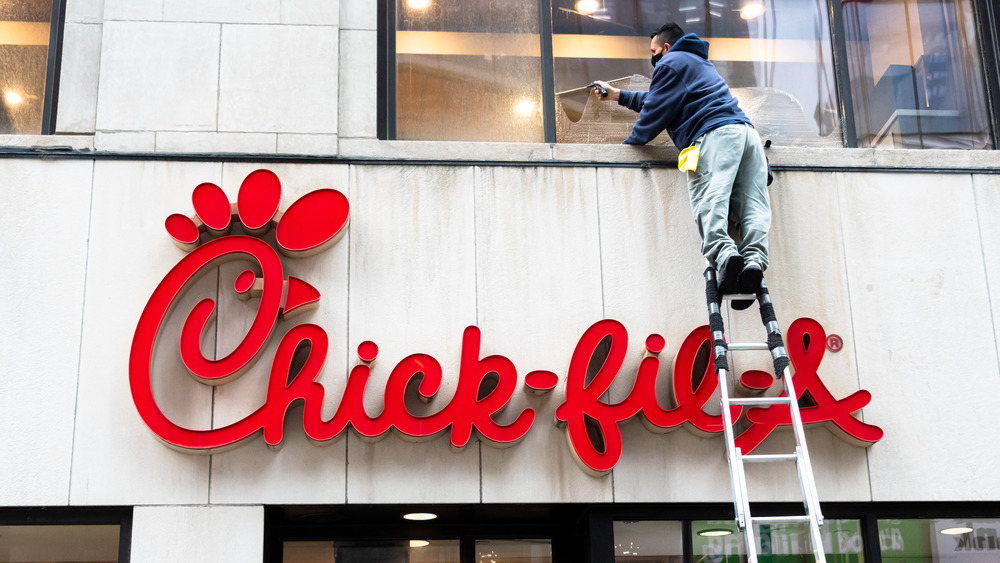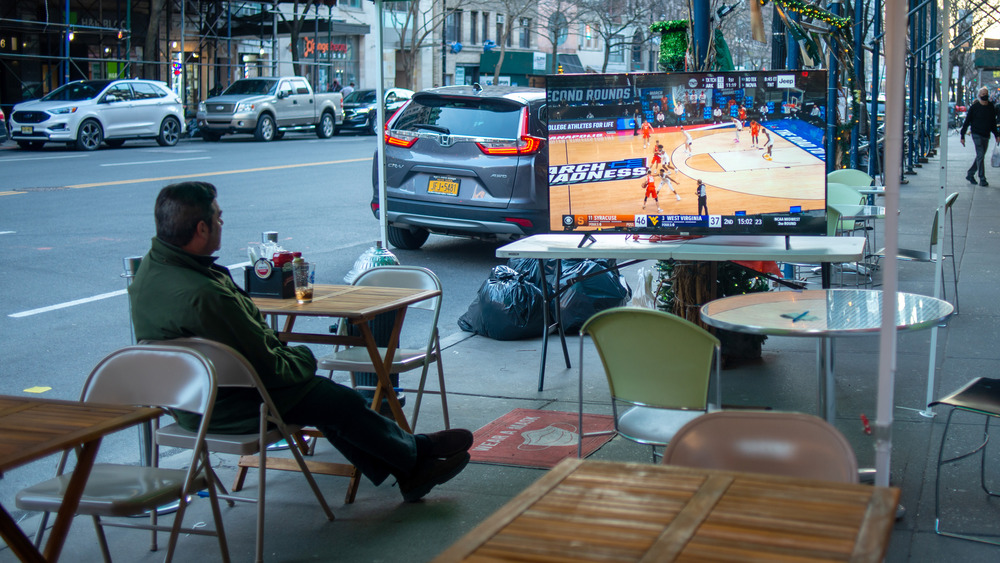How The Pandemic Has Affected Fast Food Chain Growth
Over the past year of pandemic coverage, news has been divided: The restaurant industry, as a whole, has barely kept its head above water, but a few brands have thrived. That picture of sharp contrasts was Restaurant Business' summation of Technomic's 2021 Chain Restaurant Report. Sales for the largest chains as a whole have dropped, but that overview belies the few that have done well for themselves during the turmoil.
While McDonald's has maintained its dominance, Chick-fil-A, Domino's, and Chipotle have shown the most growth in sales among the biggest brands, with respective increases of 13 percent, 17.6 percent, and 6.5 percent. Wendy's, too, has grown, albeit by 4.8 percent. However, that small increase has seen them overtake the flagging Burger King to become the second most successful burger chain.
The overall decrease in sales for the industry, then, can be attributed to fast-casual restaurants, none of which made it to the top 20 brands, and the precipitous decline in sales of Subway and Starbucks, losing 18.5 percent and 13.5 percent, respectively.
Really, these sales numbers can be read as which restaurants were ready for pandemic conditions or pivoted toward a model that suited them better. Namely, sales have depended on drive-thru or delivery options. Domino's was already establishing its own independent delivery service in 2018, according to QSR, so the sudden lurch toward people eating in played directly to their business in a way that Olive Garden, for example, couldn't compete with.
Everyone is speculating on what will happen next
A year after the onset of pandemic conditions, the most likely result is for fast food brands to push into the success they found in said conditions. In February, for instance, Delish covered how Chipotle had announced plans to add their Chipotlanes to 70 percent of their restaurants in response to the 174-percent rise in digital ordering seen during 2020.
Digital ordering, delivery, drive-thru — these trends have established themselves over the past year, leading to success for prepared restaurants. However, how these trends will be felt after mass vaccination remains an open question. After all, the restaurants which have really suffered from the pandemic are not franchises with a corporate backing but the independent eateries that barely get by in the best-case scenarios, anyway.
Food Business News wrote in June 2020 of market consolidation and how every restaurant will need to have a digital strategy. "Just making the menu available online for ordering is not going to be enough in the post-pandemic world," Amit Sharma, senior consumer foods analyst at Rabobank, explained. This has led to the speculation that ghost kitchens and virtual franchises are the future, as Eater notes.
However, Restaurant Business paints an optimistic picture, suggesting that after a year of food on the go, people desire fine dining more than anything. After a year of shrinking, the number of open businesses could thrive in a low-supply, high-demand environment. Getting there, though, may prove too costly.

